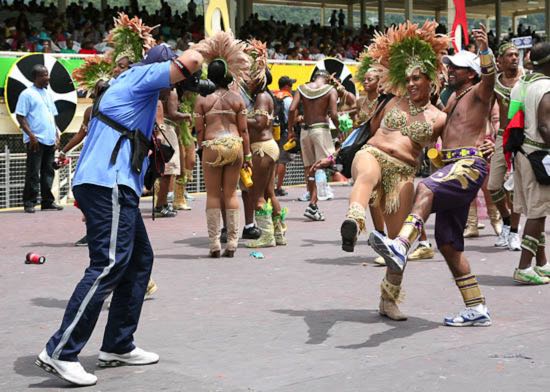Photographing Carnival
14/03/11 22:26 Filed in: Opinion

So much of today's Carnival coverage comes down to this. Photograph by Mark Lyndersay.
In my BitDepth column this week, I spent some time thinking through the way that Carnival has been influenced by photography.
What I never got around to discussing is the way that Carnival coverage itself has changed.
Twenty-five years ago, coverage of Carnival was demarcated by clear zones. Photographers and videographers were here, and the costumes were there.
Over time, here became much closer to there as the presentation of Carnival became less about costuming and theatre and more about the body and self and the articulation of individual sensuality to the camera.
The communal experience became a fundamentally selfish one, and the cameras rewarded sexually charged enthusiasm with expanded coverage.
It was, in short, the evolution of look ah mas to look at me.
Match that adjustment in the relationship between a significant diminishing in the overall skill level applied to the coverage of Carnival and you have a recipe for the commonplace writ large.
Today's Carnival, despite the expanded dynamic range offered by today's digital cameras over the colour transparency film that was used for much of the festival's coverage over the last century, is curiously compressed.
The technical approach to Carnival is now a camera with a medium range zoom lens and a flash on camera to fill the shadows blasting away at the subject. The result is flat, without any character that the natural lighting of the day might offer, with a background that falls away in exposure quickly.
It isn't a bad way to light a subject during the day, but multiplied by dozens, even hundreds, it becomes less a style than a shortcut, a visual contraction of a once rich visual language.
It isn't that the photography isn't good. It just ent.
blog comments powered by Disqus